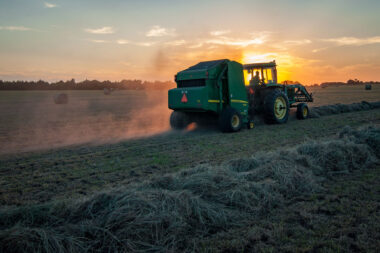Amid escalating concerns about food security, diminishing farmland, and dependence on fossil fuels, the concept of photovoltaic (PV) agriculture emerges as a pioneering solution. This groundbreaking approach seamlessly combines solar panel infrastructure with crop cultivation on shared land, presenting a dual benefit of renewable power and food production. However, realizing the full potential of PV agriculture requires careful design and ongoing advances.
Beyond traditional farming practices, PV agriculture demonstrates advantages in controlled environments and on marginal lands. Researchers in South Korea have successfully grown broccoli underneath photovoltaic panels, positioned at a 30-degree angle, providing shade and protection from the weather. The panels are positioned 2-3 meters off the ground, offering crops protection from the weather while maintaining crop quality. Agrivoltaic systems in East Africa are transforming previously unviable land into productive agricultural areas by protecting vegetables from heat stress. Integrating solar panels into greenhouses could also be transformative by providing sustainable power.
However, widespread adoption faces challenges like high upfront costs and lack of technical knowledge. Structural resilience of panel mounts to weather events needs ongoing evaluation. Farmers may resist changing traditional practices unless clear benefits are demonstrated. Policy incentives and outreach programs will be crucial to drive adoption.
Moving forward, emerging applications like agrivoltaic greenhouses, solar aquaponics, and mixed forestry hold great potential. Continued cross-disciplinary research and innovation can optimize system productivity, efficiency, and synergy. As solar and battery technologies advance and costs decline, PV agriculture is poised to sustainably transform landscapes globally by maximizing land usage for agriculture and renewable energy production.
Key Applications
Agrivoltaic greenhouses use semi-transparent solar panels to generate electricity while creating ideal growing conditions for high-value crops. Technologies like PV glass and bifacial panels allow optimized light permeability.
Elevated solar arrays in East Africa transform marginal lands into productive agricultural areas by providing shade and reducing crop water requirements. Adjustable mounting structures and AI-controlled tracking prevent over-shading.
Solar aquaponics combines PV electricity generation with aquaculture and hydroponics for symbiotic fish and plant production. The PV system powers water pumping and lighting for indoor farming.
Supporting Technologies
Bifacial solar panels utilize light absorption on both panel sides for transparency benefits.
Sensors and AI-enabled control systems continually optimize panel angles, spacing, and other parameters to balance solar generation and crop needs.
Solar powered irrigation systems harness PV energy to sustain crops with precision water usage.
Future Applications
The future applications of photovoltaic (PV) agriculture are poised to revolutionize the way we approach food security and sustainable energy production. One promising avenue is the integration of solar panels into greenhouses, a move that could exponentially increase food production. Greenhouse-based farming, when combined with solar panels, not only offers a controlled environment for crops but also addresses the heightened energy requirements associated with such setups, making it a sustainable and efficient solution.
Agrivoltaic systems are extending beyond traditional crops, with successful experiments in South Korea demonstrating the viability of growing high-value crops like broccoli underneath photovoltaic panels. This approach not only shields crops from adverse weather conditions but also enhances crop quality, with deeper shades of green observed. The potential to scale this practice to other crops may lead to a paradigm shift in agriculture, promoting resilient and sustainable practices globally.
Challenges and Considerations
Optimizing Tradeoffs and Modeling
Realizing the full potential of PV agriculture requires meticulous optimization of tradeoffs between solar output and agricultural productivity. Extensive modeling and field testing are essential to strike the right balance, ensuring that the integration of solar infrastructure enhances rather than hinders crop growth. This challenge necessitates collaboration between agricultural experts, engineers, and environmental scientists to develop comprehensive models that consider diverse climatic and agricultural conditions.
Financial Barriers
While the benefits of PV agriculture are evident, the upfront costs pose a significant hurdle, particularly for smallholder farms. Financial incentives and supportive policies are crucial to encouraging widespread adoption. Governments and organizations need to explore subsidy programs or other financial mechanisms to make PV systems economically viable for a broader range of farmers, fostering inclusivity in sustainable agricultural practices.
Structural Resilience
Elevated PV arrays, especially in regions prone to extreme weather events, require continuous evaluation of their structural resilience. Ensuring that these systems can withstand storms, heavy rains, or other environmental challenges is imperative to prevent damage and maintain long-term functionality. Ongoing research into materials and designs that enhance the robustness of elevated PV arrays is essential for the widespread adoption of this technology.
Resistance to Change
Farmers may resist transitioning from traditional farming practices to PV agriculture unless tangible benefits are demonstrated. Education and support programs are essential to showcase the advantages of these systems, addressing concerns about potential disruptions to established routines. Providing training and resources to help farmers adapt to and embrace PV agriculture will be crucial for successful implementation.
Conclusion
The marriage of solar infrastructure and agriculture in PV systems presents a promising avenue to simultaneously address food security and renewable energy needs globally. Despite the challenges, the potential benefits are substantial, from increased crop yields to sustainable energy production. The future of PV agriculture hinges on cross-disciplinary collaboration, innovation, and a commitment to overcoming adoption barriers. With continued research, financial support, and community engagement, photovoltaic agriculture can emerge as a transformative force, contributing to a more sustainable and resilient future for agriculture and energy production worldwide.



